#margaritatus
Text
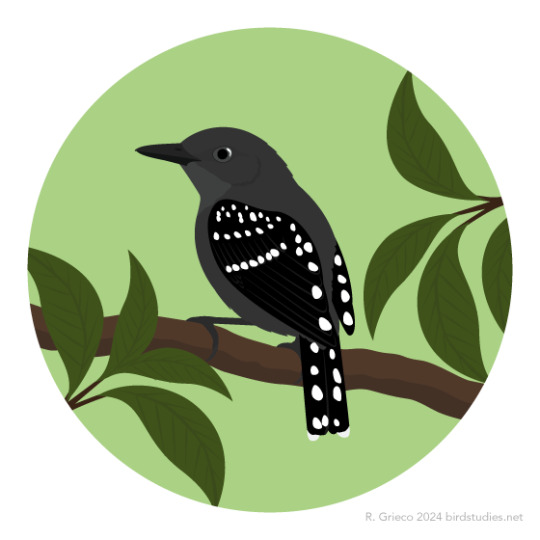
March 20, 2024 - Pearly Antshrike (Megastictus margaritatus)
Found in parts of Venezuela, Colombia, Ecuador, Peru, and Brazil, these antbirds live in lowland forests. They eat insects and other arthropods, often capturing prey in short flights, and forage alone, in pairs, or in family groups, sometimes with mixed-species flocks. One of their nests was described as an open cup woven from plant fibers, rootlets, twigs, dead leaves, and spiderwebs with a mass of dead leaves above it. It contained two eggs which a male was seen incubating.
56 notes
·
View notes
Text


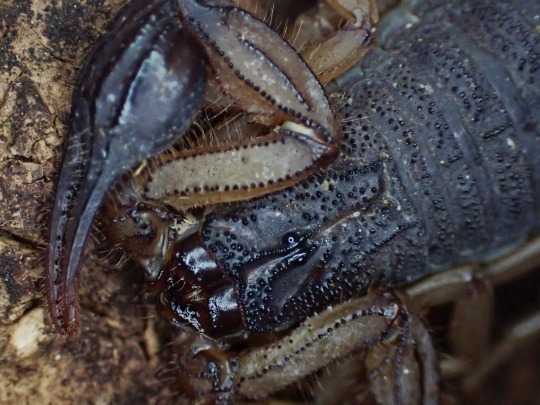

Centruroides margaritatus
3 notes
·
View notes
Text
The rasbora that isn't
The so-called galaxy or fireworks rasbora is actually a true danio, not a rasbora, though its a bit of an atypical one, not least its miniaturised length of around 2cm,or under an inch. These schooling fish live in clear, shallow, mountain springs in the Tai speaking Shan country, near Lake Inle, at an altitude from half a mile to a mile, in a water chemistry above neutral pH, and richly vegetated with Anacharis plants. As an upland cyprinid species, they need temperatures of at least 20 degrees centigrade, but not ordinarily exceeding 24 degrees, although it may tolerate daytime temperatures above this. Captive fish have fared poorly at a permanent temperature of 26 degrees or higher, so exposure to such high temperatures, must be temporary.
Like other Asian mountain fishes, they are "coldwater tropicals" by origin and care requirements. They must be maintained in schools, as you might expect, seeing that these are small cyprinids. Feeding is as for other Danio species, without complication. This species is now Danio margaritatus, and an alternative name for this species in the aquarium trade, is now celestial pearl danio, referring to a larger relative, D albolineatus, which is also indigenous to Southeast Asia, and has been circulated much longer in the aquarium trade. Whereas the popularity of this beautiful little cyprinid is both recent and rapid, because the species was first described by ichthyology as recently as 2006.
#Danio margaritatus#galaxy rasbora#Fireworks rasbora#celestial pearl danio#coldwater tropicals#schooling fishes#small cyprinids
0 notes
Text

Pink-throated Twinspot (Hypargos margaritatus), male, family Estrildidae, South Africa
photograph by Rich Lindie
576 notes
·
View notes
Photo

A new variant has been added!
Pearly Antshrike (Megastictus margaritatus)
© Joseph Wolf
It hatches from bold, colored, distinctive, humid, old, rusty, slow, and white eggs.
squawkoverflow - the ultimate bird collecting game
🥚 hatch ❤️ collect 🤝 connect
0 notes
Text

InsertAnInvert2024
The theme for February is relationships!
Week 5: Courtship
Bark scorpion (centuroides margaritatus)
pinchy stingy mating ritual 🥰
#arachnophobia#arachnids#CW arachnids#insertaninvert2024#insertaninvert#scorpions#artists on tumblr#art#digital art#digital artist#drawing#no AI
9 notes
·
View notes
Note
I don't want to be rude, especially if you were doing a bit, but the image you posted for celestial pearl danio (Danio margaritatus) is of a different fish (Maybe a betta?). Celestial pearl danios look like this (image from TFH magazine)
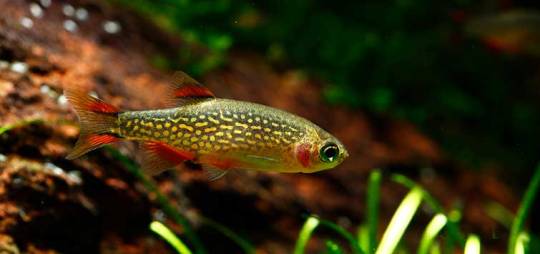
Love your blog!
I JUST LOOK THIS SHIT UP ON GOOGLE PLEASE STOP RATIOING ME IN MMY NOTES
93 notes
·
View notes
Video
youtube
Микрорасбора галактика (Danio margaritatus) - история открытия и условия...
0 notes
Photo

Danio margaritatus, the Celestial Pearl Danio or Galaxy Rasbora, discovered in 2006 in Myanmar. https://www.instagram.com/p/CkS-J2_sGVAdJeaNjpuXTARRPr1-ES1eohfv7s0/?igshid=NGJjMDIxMWI=
1 note
·
View note
Text
← Improving well-being through mind manipulation: Motorboats versus sailboats
A pair of peacock bass (Cichla ocellaris) guarding their eggs in Bella Vista, Bolivia (video) →
Biotope in my study, a low-tech natural aquarium
Posted on September 27, 2009 by tuncali

Bitope in my study. A low-tech natural aquarium. Click on to view the bigger picture.
Like natural garden ponds this aquarium has no filter, no heater, no artificial light, no electrical equipment at all. It is a silent aquarium, a piece of real tranquility. It receives natural sunlight directly from the window. The temperature may drop to 16°C in winter, and rise up to 28°C in summer, but no problem; the inhabitants are suitably selected subtropical species. The marginal plants, especially the umbrella plants (Cyperus alternifolius) keep the water much cleaner than any manmade filter can. Because the nitrate and phosphate levels are so low that they are practically immeasurable, even direct sun light for a couple of hours doesn’t cause algal blooms. Size of the tank: 120x60x40cm, 40 cm is the height.
Inspired by natural garden ponds I gave no fish food at all in the first eight months because I wanted to have a self-sufficient ecosystem with its own food chain. The fish I added after four months like dwarf croaking gouramis (Trichopsis pumila) and scarlet badis (Dario dario) could flourish by eating young dwarf shrimps, crustaceans and other micro-animals they could find in the aquarium. All these micro-animals could in turn grow and multiply well by eating algae and plant remains. My only input to this ecosystem were dried beech leaves from the nearby wood.

Half pyramid structure with foam sheets.

Sand, stones and roots
I began to set up the aquarium in August of 2006 as illustrated in the pictures below. By gluing progressively smaller foam sheets from bottom to top with aquarium silicon I constructed a sort of half pyramid. My objective was having different depths in the tank with a shallow water zone at the back.
These were the first creatures I added to the aquarium (August 2006):
Plants:
Umbrella plant (Cyperus alternifolius)
Echinodorus rigidifolius and E. cordifolius
Java moss (Vesicularia dubyana)
Java fern (Microsorium pteropus)
Hygrophila polysperma and H. corumbosa
Cryptocoryne wendtii
Anubias nana
Various swimming plants (Lemna minor, Limnobium laevigatum, Ceratopteris cortuna)
Invertebrates:
Striped dwarf shrimps (Neocaridina denticulate)
Mexican amphipods Hyalella azteca
Water louse Asellus aquaticus
Water flea (Daphnia pulex)
Malaysian trumpet snails (Melanoides tuberculata)
Ramshorn snails (Planorbis corneus)
Fish:
4 x dwarf otocinclus, a small algeater (Otocinclus affinis)
I waited four months before adding four scarlet fish (Dario dario), a pair of dwarf croaking gouramis (Trichopsis pumila) and six celestial pearl danio (Celestichthys margaritatus) into the tank. After four months I thought the population of shrimps and arthropods reached a sufficient level for sustaining the carnivorous fish.
Carnivorous fish added after four months (January 2009)
Fish:
4 x Scarlet fish (Dario dario)
A pair of dwarf croaking gouramis (Trichopsis pumila)
6 x Celestial pearl danio (Celestichthys margaritatus), surface dwelling swarm fish
The private life of plants in my biotope

Biotope seen from above, October 2006
I had planted the umbrella plants on the right and left backside corners. They thrived unbelievably fast. I guess, they like natural sunlight. Already after two weeks their reddish roots were all over the tank like hair bundles, also reached the front glass. The umbrella plants are perfect for the purification of water and sand, but they cause a mess in the aquarium and threaten other plants. Mixed up with Java moss the roots of umbrella plants make impenetrable jungles up to the water surface. This jungle like ecological niche might be ideal propagation ground for small invertebrates provided that it receives sufficient oxygen. But I know today that umbrella plants must be kept several meters away from other plants because they are so dominant and fast growing species.
The sword plants (Echinodorus species) with emergent leaves were growing well at the beginning but they slowed down after several months. They are still alive today (July 2007) but almost without growing. I guess, the reason is either iron deficiency, or the harsh competition of umbrella plants.
Java moss is a real nuisance in this aquarium. They propagate so fast that they cover all the other plants in a few weeks. I have to throw away bundles of Java moss regularly. Though it makes ideal hiding and feeding ground for invertebrates and baby fish Java moss is not sustainable in the long term. It requires so much maintenance, that’s not the idea. I should either get rid of Java moss or find a small herbivorous animal which can eat it.
The sword plants and Cryptocoryne wendtii can grow together. The same can be said for the triple Hygrophila polysperma, Anubias nana and Java fern. I think, these are all sustainable, low maintenance plants in most cases. Hygrophila corumbosa didn’t grow well from the beginning. It either didn’t like the conditions of my tank, or couldn’t stand to the competition of other plants.

Front view of biotope, October 2006
As to the swimming plants: They all multiplied fast initially, then came to a standstill, and finally disappeared altogether after eight months, including the invasive common duckweed (Lemna minor). I observed a similar phenomenon in the temporal lakes in Bolivia. The swimming plants which invade the whole surface initially begin to diminish due to the competition of plants like water lilies that have roots at the bottom. Such plants like water lilies don’t depend on the nutrition content of water alone because they can take additional nutrition from the bottom substrate (iron-rich laterit soil in most cases) through their roots. I guess, plants like umbrellas are purifying the water so well in my tank that even invasive plants like duckweeds must starve.
To summarize what I learned through all these observations, mixing up plants after the visual aesthetic, or visual imagination without the support of experience never give satisfactory results. Each species, or each compatible group of species must have sufficient area in the tank. Otherwise, the dominant group will invade the whole aquarium unless you fight against it with a high level of maintenance. For example, I would have only umbrella plants and Java moss in an aquarium, provided that I am ready to throw away the excess Java moss regularly. Or only sword plants (Echinodorus species) and Cryptocoryne wendtii in another. Water lilies can be kept in large aquariums, or better ponds with sufficient distance from other plants.
The private life of invertebrates and fish in my biotope

Male scarlet badis (Dario dario)
I never saw the water louse (Asellus aquaticus) again after I added them to the tank. I had hoped that they would thrive among the beech leaves which I collected from the nearby wood because they are perfect herbivores for any ecosystem. Their larvae could be excellent addition to the food chain for the fish. I still don’t know today (July 2007) if any of them could survive. But I guess, they need a hibernation period in really cold water in winter which is not possible in a home aquarium.
The dwarf shrimps (Neocaridina denticulate) thrived extremely well and reached an unbelievable population in just four months. I guess, they liked the clean nitrate-free water. After four months I could see baby shrimps everywhere in the tank. Because there were no enemies like carnivorous fish they were foraging freely during the day. They changed their behavior after I added the carnivorous fish like the scarlet badis or dwarf croaking gouramis. They began to live nocturnal and hide during the day, especially the small babies. Though some of them fall prey to fish their population was big enough and stable after four months with the carnivorous fish.
The Mexican amphipods (Hyalella azteca) are I think ideal animals for any biotope aquarium. They are the North American version of the better known fresh water shrimp Gammarus pulex. They are but smaller, and more resistant to higher temperatures, oxygen deficiency and organic pollution in water. Hyalella azteca can grow up to 1 cm, though it generally remains smaller. It’s generally said that they require hard water (GH over 10) for breeding. Initially I thought baby Hyalella azteca would be ideal food for the fish. And because the scarlet badis or dwarf croaking gouramy are not large enough to eat adults a sustainable population would be feasible for the long term. But I had suspicions about their breeding potential because the water was maybe not hard enough (GH = 8).

Female scarlet badis, a death sentence for all
But the Mexican amphipods could multiply quite well even though not as prolific as the dwarf shrimps. They also switched over to night life like shrimps after I added the carnivorous fish. But I guess, they are not as good as shrimps in escaping predators, especially the baby arthropods. Nevertheless, I can still see today Mexican amphipods at night among the plants when I look with a torch. I guess, most of them are hiding among the stones and gravel.
The Malaysian trumpet snails (Melanoides tuberculata) are voluntary recycling workers. They keep the sand clean just like the earthworms do for soil. They generally hide in the sand during the day and come out at night. They are hermaphrodites carrying both sexual organs on a single body. They can fertilize themselves (I don’t know if they can do cross fertilizing) and generally they are prolific breeders. I had started with ten trumpet snails a year ago. Now I can see lots of them. Trumpet or ramshorn, snails are indispensable agents for recycling in an ecosystem. They break down the organic matter before bacteria do and make them easily available for plants. This is exactly the type of recycling we need with a low bacteria level.
Water fleas (Daphnia pulex) could also multiply very well in the first four months with the algeater dwarf Otocinclus as the only resident fish. They disappeared in a few days after the arrival of scarlet badis. I was sorry for my water fleas and for the diminishing biodiversity but I knew that the water fleas had no chance. But I know today that the common water flea can easily be a part of such an ecosystem with shrimps and plant eaters without the carnivorous fish.

Croaking dwarf gouramy (Trichopsis pumila)
About three months after the initial set up I thought, the population of shrimps reached a sufficient level for sustaining tiny carnivorous fish, and added four young male scarlet badis to the tank (November 2006). Only males, because I couldn’t find any females. It’s somehow very difficult to find female scarlet fish. I added a pair of dwarf croaking gouramis in December.
Scarlet badis (Dario Dario) is a magnificent tiny fish of Indian origin whose size can hardly exceed 2.5 cm. Because it lives in ponds and lakes in high altitude plateaus it likes cool water, but it tolerates temporary higher temperatures like 28°C. Dario dario is in general a hardy fish. It is resistant to diseases and adaptable to various water conditions. But they rarely accept staple food; they need live foods. That’s why they are not easy fish to keep in any home aquarium, but ideal candidates with their tiny size for a self-sufficient biotope aquarium. They are very beautiful. They resemble the anemone fish of coral reefs with their bright colors.
My four young scarlet fish thrived in the biotope without any additional food. In several months they became colorful and aggressive adults. Each had its own territory in the tank. They were slimmer, more colorful, more aggressive and agile than the scarlet fish I have seen in some industrial aquariums. Even their behaviors were different. They weren’t showing up the whole day like a porcelain piece in a vitrine. They were hiding most of the day only to appear at dawn and dusk times. They were briefly but efficiently searching for food and showing other males who is the boss in their territory. After five months my scarlet badis were still as healthy as iron, and I was sure that they could find sufficient food in the tank. This was the aquarium now which I enjoyed most because I could observe more natural behaviors. How should I find wives for my scarlets on heat?

Female dwarf yellow cichlid (Apistogramma borellii)
It was a mistake to put dwarf croaking gouramis to the tank. I had initially hoped that they would remain near to the surface and leave bottom areas to scarlets. But they didn’t. Maybe due to lack of swimming plants on the surface they looked for hiding places on the bottom and dominated scarlet fish. Though they looked healthy enough I think my unheated aquarium was too cool for the gouramis. So, after three months I separated them to another natural but heated aquarium. They are still living there together with Betta imbellis. They could even produce some young fish in the meantime.
Celestial pearl danios (Celestichthys margaritatus) are small swarm fish with Asian origin. They are close relatives of the well-known zebra danio (Danio rerio). I preferred pearl danios to zebra danios because they are smaller, calmer and they don’t have the habit of jumping off the aquarium. Like scarlets they can perfectly be kept in unheated aquariums with temperatures varying between 15° and 25°C. Pearl danios proved quite compatible with scarlet badis because they are peaceful and surface dwelling swarm fish. They look healthy and satisfied but I am not sure if they will get enough food in the long term. Maybe they are too large a burden for the food chain of a small biotope without insects raining from the sky.

Male yellow dwarf cichlid (Apistogramma borellii)
All went very well until I found female scarlets from a private breeder in Germany. My male scarlets were very happy for a couple of days. But only a couple of days because all the fish except pearl danios died, I guess, due to a disease carried by female scarlets. A tragic end to my experience with scarlets. Since then, I am keeping dwarf yellow cichlids (Apistogramma borellii), another subtropical species.
Unfortunately, I had to give up my self-sufficiency concept with borellis because they are not tiny enough like scarlet badis. I had to begin giving some supplementary food even in miniscule amounts. Nevertheless, I am now quite sure that the self-sufficiency concept was a success with the tiny scarlet fish.
0 notes
Video
50L by Riccardo Cavarzeran
Via Flickr:
Fauna: Danio margaritatus (Roberts, 2007) Caridina multidentata (Stimpson, 1860) Flora: Anubias barteri (Schott, 1860) Pogostemon helferi (Hooker, 1885) Ludwigia glandulosa (Walter) Myriophyllum mattogrossense (Linnaeus) Cryptocoryne parva (De Wit, 1970) Microsorum pteropus (Blume, 1933) Lemna minor (Linnaeus) Phyllanthus fluitans (Linnaeus, 1753) Bucephalandra sp. (Schott, 1858) Staurogyne repens [(Nees) Kuntze]
#acquario#acquaristica#acquariofilia#tank#50L#danio#margaritatus#tropical#fish#caridina#multidentata#rasbora#galaxy#microsorum#anubias#barteri#pogostemon#helferi#ludwigia#glandulosa#myriophyllum#mattogrossense#cryptocoryne#parva#pteropus#lemna#minor#fluitans#phyllanthus#bucephalandra
13 notes
·
View notes
Text


Female centruroides margaritatus.
4 notes
·
View notes
Photo
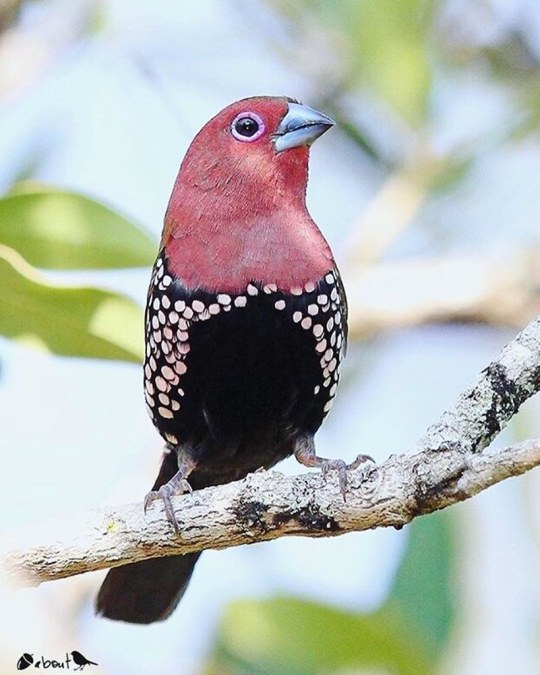
Pink-throated Twinspot (Hypargos margaritatus)
© Tesfay M
653 notes
·
View notes
Text

Pink-throated Twinspot (Hypargos margaritatus), male, family Estrildidae, Kwa-Zulu Natal, South Africa
photograph by Rich Flack
360 notes
·
View notes
Text
@robotzebra submitted: Found this big friend and was wondering who they are? They are very stylish. (location : northern sweden)
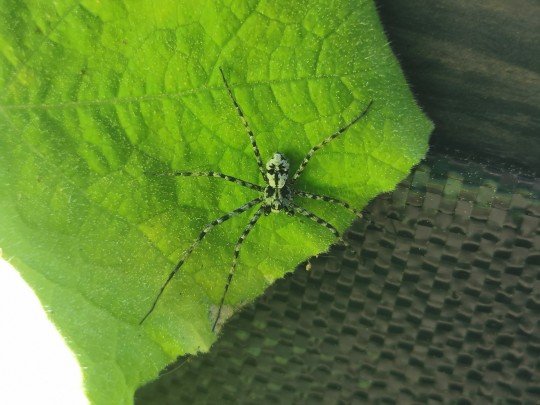
A nice houseguest examining the cupboard

A pal enjoing a salty snack


Weevil that had found their way into the bathroom. They were then relocated outside

A very excellent collection of pals! You're right, that first one is extremely stylish. What a great outfit. They appear to be a running crab spider, Philodromus margaritatus. You didn't ask for IDs on the others so I'll assume I'm just meant to admire!
#animals#insects#bugs#spider#arachnids#submission#running crab spider#Philodromus margaritatus#weevil#beetle#moth
82 notes
·
View notes

